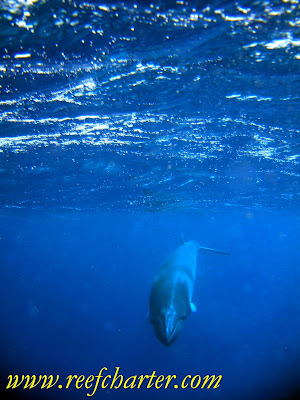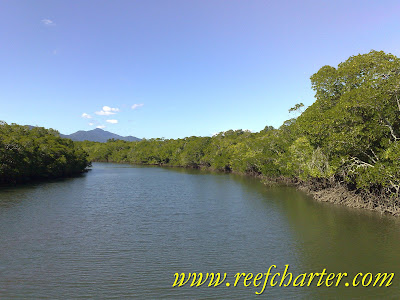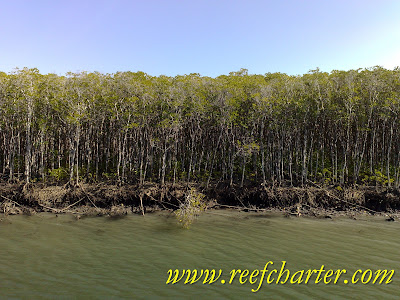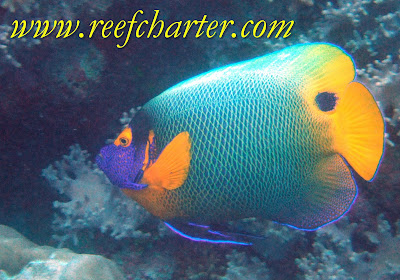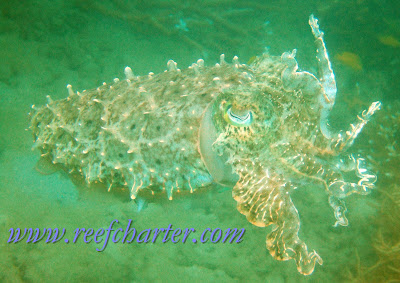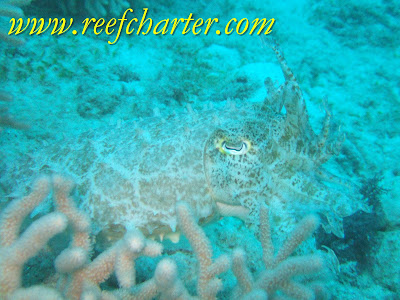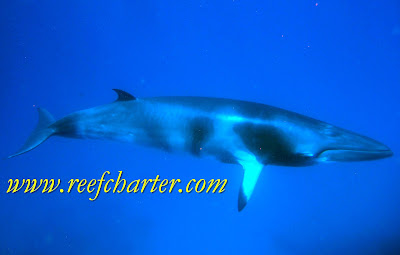
The Minke whales migrate from southern waters off Victoria to the northern areas of the Great Barrier Reef from about June every year. They grow to about 8m (26′) log and adults can weigh about 6 tonnes.
This young Minke whale decided to cruise around one of our dive sites on the outer reef. The curious young fellow was very intrigued with these strange creatures wearing bottles and blowing bubbles constantly. Jonny our intrepid young dive instructor happily snapped these photos as Fred swam around the boat and divers.
More on the Dwarf Minke Project can be found at the CRC Reef Research website.
More on the Dwarf Minke Project can be found at the CRC Reef Research website.
